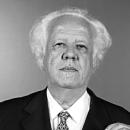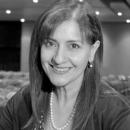
Season of hope
MÁS EN ESTA SECCIÓN
By the time you see this editorial in our print edition, it will be Christmas. But for now, as this is being written, many Catholic and Christian Latinos in Philadelphia are still spending their nights in the celebration of posadas — those sojourns through the neighborhood that purport to replicate Mary and Joseph’s efforts to find shelter somewhere in Bethlehem before the birth of the Christ child.
“In the name of heaven, I ask you for shelter,” those who take the part of the Holy Family sing outside each house at which they stop. At each, they are turned away — for fear they might be ruffians; because the asking seems presumptuous and makes those on the inside furious; because the petitioners are humble and have no standing and those denying them entrance don’t want to hear their stories or even learn their names.
The rationales all sound hauntingly current.
Immigration advocates have long made an analogy between the Holy Family’s migration and that of undocumented immigrants seeking shelter in our nation. For no small number of the latter, knocking at doors and being rebuffed has been the “posada” of every day and month and year, for years on end.
In 2014 the analogy is particularly vivid. Eight undocumented immigrants have sought sanctuary from final deportation orders in churches this year; seven of them will spend Christmas in the religious edifices where they now live. 24/7.
The first to seek sanctuary was Daniel Neyoy Ruiz, an undocumented man in Tucson who sought sanctuary in the Southside Presbyterian Church, a church with a storied tradition of providing sanctuary. Back in the 1980s, when Guatemalans and Salvadorans fled bloody civil wars but were characterized by the Reagan administration as “economic migrants” rather than asylum seekers, Southside Presbyterian Church became the first church in the nation to offer sanctuary to the Central Americans. Hundreds of refugees were sheltered there during the years the original sanctuary movement was active.
Then, as now, residing within church walls doesn’t actually afford real legal protection, but the tradition of affording a religious sanctuary that must not be breached — which can be traced back to the Old Testament — has so far been respected by both local police and immigration agents.
Neyoy Ruiz is one of the success stories of the new sanctuary movement: a month after entering into sanctuary he was granted a one-year reprieve on his deportation by ICE.
Today, three others are in sanctuary in Arizona; one in Denver; one in Chicago; one in Portand (Oregon) and one here, in Philadelphia.
Angela Navarro entered into sanctuary at West Kensington Ministries on Nov. 17, several days before President Obama announced the controversial executive action that might yet offer respite from deportation orders to some of those who have sought sanctuary in the nation’s churches.
It is not a certain thing, of course, but then, little has been certain for these sojourners, and yet their hope is enduring.
For believers, this, too, has a deep resonance.
One of our churches has opened its doors to a young Honduran woman, her two U.S.-citizen children and her U.S.-citizen husband. It is the culmination of her long and arduous “posada”: a temporary shelter, a place of light and warmth, of grateful communion. It is a place where this young woman can hold hope close and dear.
A hope that perhaps next holiday season, it’ll be she who sings a welcome as she opens her door to the next weary wayfarer in need.






DEJE UN COMENTARIO:
¡Únete a la discusión! Deja un comentario.